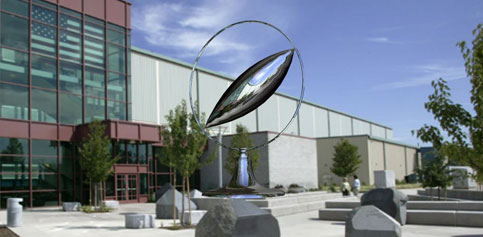 The Space Between: Optic Clusters
The Space Between: Optic Clusters
With "Optic Clusters" I take the viewer on a visual exploration of three-dimensional space; the space between the balloons. This is the world of no straight lines—no edges to fall off. After all, the world is round. The artist Delicroix once speculated, "It would be worthy to investigate whether straight lines only exist in our brains." Plato searched for hidden forms in nature, but remained in flat land. He didn't see the curves. Even the great Leonardo became preoccupied with pure but straight geometric designs.
"Optic Clusters" show us hidden forms that can only be seen and which only exist in curved space. We search through a myriad of endless structures to find the one indivisible "God particle," as it is called by physicist Leon Lederman, in his book of the same name. I call this shape a "Trion-Re" or "Starseed," one form creating all geometric forms found in nature. From the one comes the many. Pythagoras promoted the idea that a few basic shapes underlie a myriad number of shapes of the visible world.
That common denominator seems to be light itself. With "Optic Clusters" I play with the light, trying to influence it from one place to another. I twirl it between my fingers, manipulating it until I can pluck a single ray and examine its form, like a stop-action photo, but in 3-D sculpture. The viewer can optically explore the interrelationships of each different shape and view the source of its creation. We are in a constant juxtaposition of positive and negative space, transforming one to the other in a seemingly endless dance.
Leonard Schalain, in his book, Art and Physics, states, "Visionary art alerts the other members that a conceptual shift is about to occur in the thought system used to perceive the world. Revolutionary art in all times has served this function of preparing the future."
SCULPTURES |
|
MONUMENTAL CONCEPTS |
|